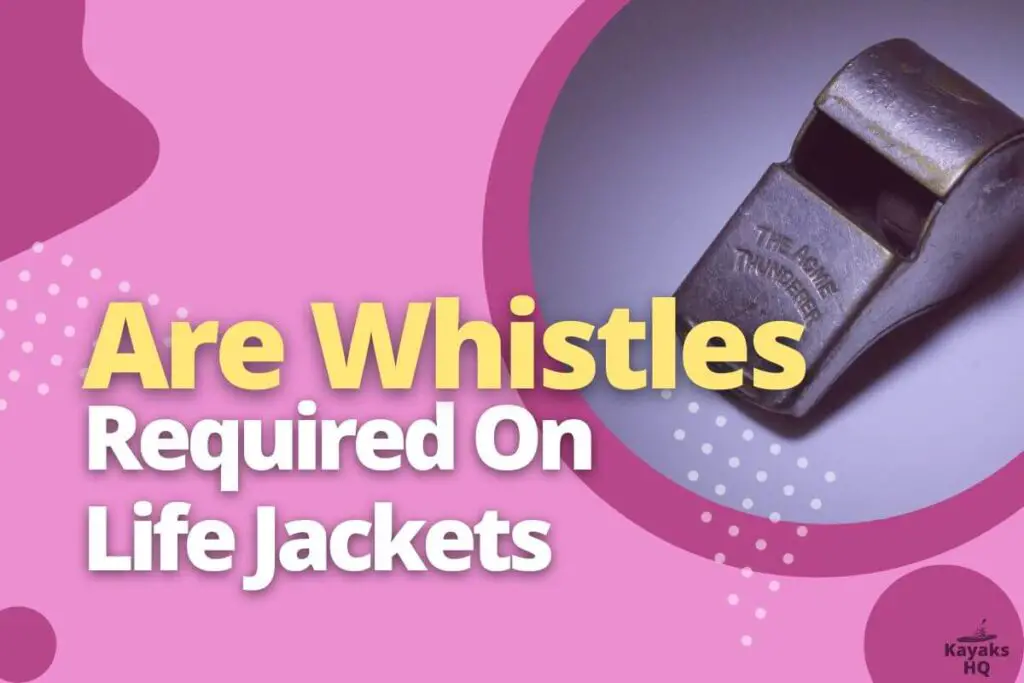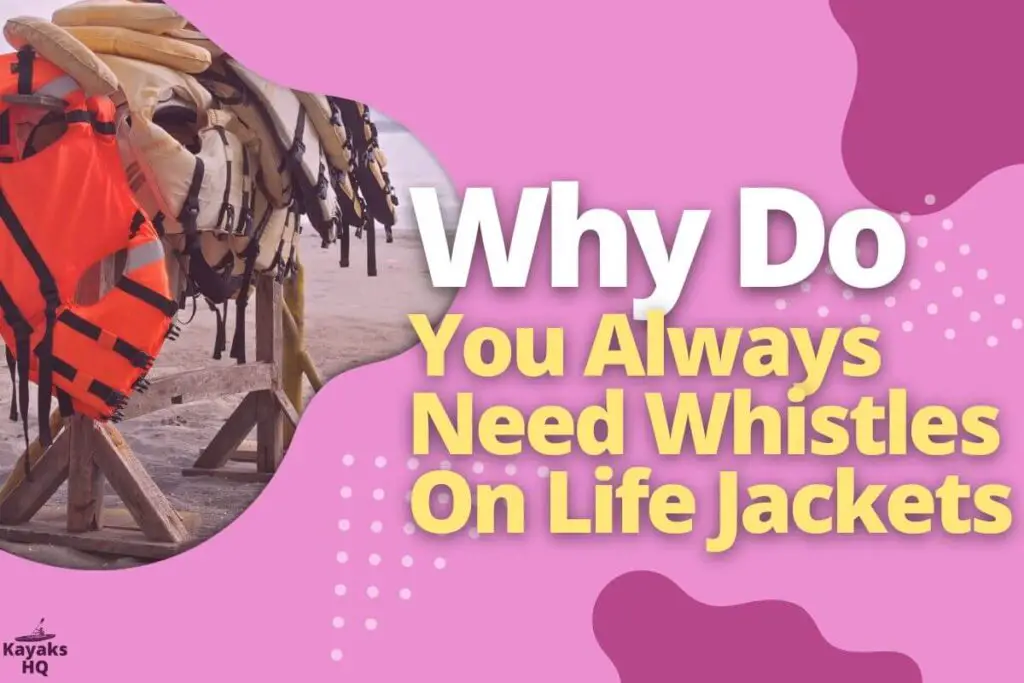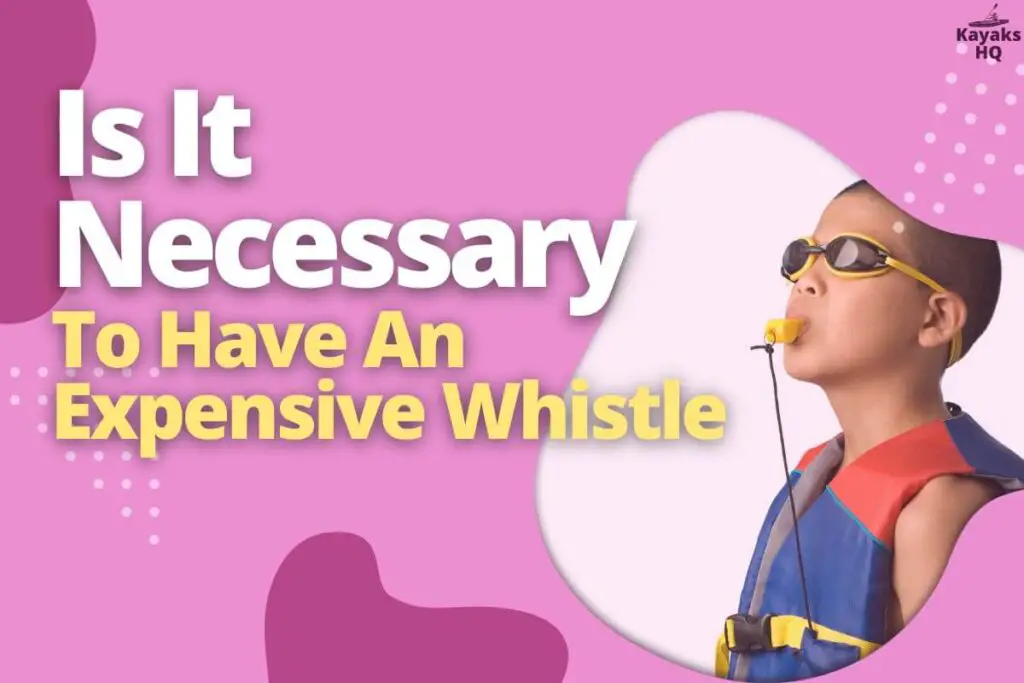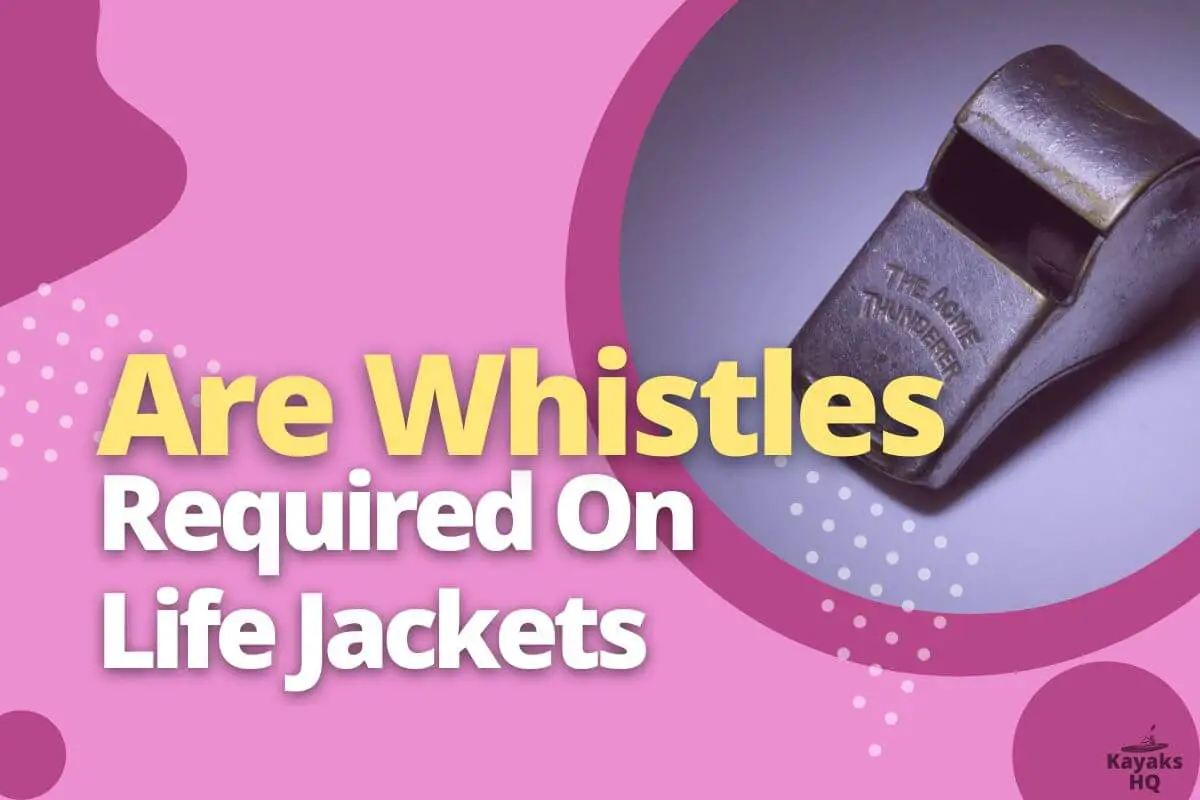Do you like to go boating or kayaking? Are you familiar with the regulations governing the use of whistles on life jackets?
If you’ve ever gone boating or kayaking, then you probably know that there are certain safety requirements that you need to follow. But do you know about the whistle requirement on life jackets? We’ll look at this in more detail in this post.
In this post, we’ll take a look at whether whistles are required on life jackets.

Here’s The Answer To Are Whistles Required On Life Jackets
The answer to the question “is a whistle required on a life jacket” is yes. Life jackets must have an audible signaling device such as a whistle or other sound-producing device.
This is according to Coast Guard regulations and state laws, so it’s important to check your local regulations before purchasing a life jacket for boating or swimming.
It’s recommended that you always carry a whistle to alert others of your presence and for safety reasons in case of emergencies. For instance, if you fall into the water and are unable to yell, a whistle can alert others to your location.
If you’re working in or near water, a whistle can help alert others to your location if you need help. Life jackets should also be worn with a whistle when used for activities like kayaking, canoeing, and paddle sports.
Why Do You Always Need Whistles On Life Jackets?

The U.S. Coast Guard requires that all life jackets have a whistle attached to them in order to help rescuers locate a person in the water.
- There are many dangers that boaters can face when out on the water. One of the most common dangers is a collision with another vessel. There were 4,463 watercraft accidents in 2021, according to the U.S. Coast Guard. These accidents resulted in 758 fatalities and 3,511 injuries.
- Another danger that boaters can face is being capsized or thrown from their vessel. A total of 3,168 accidents involving capsized or flooded boats were reported by the U.S. Coast Guard in the year 2021. These accidents resulted in 293 fatalities and 1,463 injuries.
- Wearing a life jacket is the best way to prevent fatalities in boating accidents. However, simply wearing a life jacket is not enough. The life jacket must be in good condition and of the appropriate size for the intended wearer. In addition, the life jacket must have a whistle attached to it. A whistle is an important tool that can help rescuers locate a person in the water.
The primary purpose of a whistle on a life jacket is to be heard from farther away than your voice.
A whistle can be heard from much farther than a human voice, which is especially important if you’re floating in the water and trying to attract attention. A whistle will also work even when it’s wet, whereas yelling may not be as effective.
Will A Life Jacket Without A Whistle Be Considered Safe To Use?
The answer to the question is yes. It would be safe to use a life jacket with no whistle. However, this is not as safe as using one that does have a whistle.
The main reason for this is that life jackets are often used for safety purposes or to prevent drowning. A life vest without a whistle might make it more difficult for someone else to find you in an emergency situation and, therefore, could result in injury or death if you were unable to signal for help.
The use of whistles can also help others identify where you are when you are in distress. So they can rescue you faster than if they had no idea where your location was located at all times.
Are Whistles Required On All Types Of Life Jackets?
In most cases, a whistle is required on all types of life jackets. There are, however, a few exceptions to this generalization.
- Personal Flotation Devices (PFDs): A PFD does not need to have a whistle as long as it has an automatic inflating device and other safety features.
- Life Jackets Without A Personal Flotation Device: These types of life jackets do not require whistles because they aren’t designed for use in water sports and activities like boating or swimming, so whistles would be unnecessary.
- Vests: The whole point of wearing a vest is that it’s easy to put on quickly without having to bother with attaching buckles or zippers—you just pull it over your head! This makes whistles useless additions to vests since they would only get in the way of putting them on quickly if you needed them right away.
Having A Whistle On A Life Jacket Has Several Advantages

Whistles are loud and easy to use.
- Whistles are loud, which makes them easy to find in an emergency situation. They can also be heard over long distances, so you don’t have to worry about your whistle being too quiet.
- Whistles are also versatile. They’re inexpensive, they’re easy to install on boats or life jackets, and they can be used in any condition (including rain).
- Whistles can be used in emergency situations or when you need help. Most people think of their safety whistles as “emergency” devices. This means that if someone falls overboard or gets washed out by a wave during a storm at sea, then there will be at least one person still above water who knows how to use the whistle effectively!
When Should A Whistle Not Be Used?
- If you are not in a boat, there is no reason to use a whistle. It is important to understand what kind of environment you will be in and if it requires the use of a whistle. As mentioned above, whistles are good for alerting people who may be nearby, but because they can also annoy animals and insects, they can make your situation worse. It’s better to look for other ways of getting attention when possible!
- In crowded areas like beaches or parks where there are many people around (especially during summer!), this could mean that the area becomes congested with noise from multiple sources making communication difficult between yourself and others around you, so using any kind of sound device like this would only make things worse rather than better!
How Do You Install A Whistle On A Life Jacket?
There are several ways to attach the whistle to the life jacket. The easiest way is by tying it with string or tape, but you can also use Velcro if you have it.
If your life jacket doesn’t have built-in loops for whistles, then you may need to sew or glue one in place. To test whether your whistle works: blow into it and listen for any noise coming from inside of it (you should hear at least a faint sound).
If there is no sound, try cleaning out any dirt or debris that may be clogging up its airway by blowing hard into it again until you hear an audible noise from within the device, and then try testing again. If all else fails, replace it with a new one!
To Use a Whistle on Your Life Jacket
When wearing your PFD (personal flotation device), always keep an adult-sized whistle attached to your neck. So that if something happens where someone needs help quickly, both parties know how best and what kind of help is needed most urgently.
Whether that means throwing rope behind a boat/lifeboat nearby & saving a person who fell overboard or throwing a line off shoreline so someone else can pull them back safely ashore.
Without getting tangled up underwater while trying to swim back over distance, expanse distance between boat/shoreline at night time when visibility reduced due to wetness, etc.
Is It Necessary To Have An Expensive Whistle?

Definitely not, but it can be helpful. Whistles at lower prices are available, but they will not hold up to the test of time like their more expensive counterparts will.
An inexpensive whistle will probably only last you a few months before becoming broken or lost. If you have the money and are looking for a quality product that will last longer than other brands on the market, then yes, get yourself an expensive whistle!
Why Is It Important to Have an Expensive Whistle?
The main reason why it’s important is because of how well they work! Unlike cheap options, which usually break after one use (or less).
These high-quality products tend to be made from durable materials such as aluminum or plastic so that they don’t break easily over time.
Like other models might do after continued use each day during boating season when going out onto open waters where there are strong winds blowing everywhere around us all day long.
Will A Cheap Whistle Be As Good As An Expensive One?
If you’re looking for the best whistle for your life jacket, you should know that a cheap whistle will work just as well as an expensive one.
While it may seem like a waste of money to go with something inexpensive when there are so many options out there, you’ll find that most whistles don’t differ much in terms of function or quality.
For example, one of our favorite whistles is made by HEIMDALL and costs less than $5; it’s also rated 4 out of 5 stars on Amazon with over 2500 reviews!
If you want to be sure your life jacket has a whistle attached but don’t want to spend too much money on it—or if you’re just starting out with boating—our recommendation would be this affordable option from HEIMDALL.
Are There Any Alternatives To Having A whistling Life jackets?
While whistling life jackets is the best way to alert others to your location, there are other ways to ensure you’re found.
One alternative is using a personal locator beacon (PLB), which is usually worn around the neck and emits a signal that can be picked up by satellite and used to pinpoint your location.
Another option is a personal locator transmitter (PLT), which sends out an electronic signal so that rescuers can find you when they’re close by.
However, these devices aren’t as effective as whistles because they don’t work in all conditions (like wind or heavy rain) or if a person loses consciousness and doesn’t remember how to use their device properly.
How Does One Use A Whistle On A Life Jacket?

Whistles are an important safety feature on life jackets. However, they’re not always in the right spot or used correctly. Here’s how to use a whistle on your life jacket:
- Make sure you have a whistle on your life jacket.
- Make sure you can reach the whistle with one hand while wearing the jacket, even if it’s fully inflated (usually, this means at least 8″ of strap length).
- Make sure you know how to use the whistle—it should be easy for you and anyone else using it. You don’t want to waste time trying to figure out how it works when time is of importance, and someone urgently needs your help!
- If possible, practice blowing into a real one (not just dry-run) before heading out onto open water; do this with both hands so that one isn’t compromised by wearing gloves later on, too, when cold conditions might make them stiffer than usual – especially if pregnant women/children are involved.
What Are Some Tips For Using A Whistle On A Life Jacket?
If you are using a whistle on a life jacket, here are some tips to keep in mind.
- Always wear the whistle on your life jacket. Having a whistle on hand in the event of an emergency can be extremely beneficial.
- Use it to alert other people who may be nearby that something needs their attention or assistance. A whistle can also be used as a means of communication between two parties separated by distance or noise levels too high for them to hear each other without assistance from another party, such as clapping hands together or shouting loudly enough so that others will hear what has been said if they happen upon the scene before anyone else does (which could take hours).
Final Thoughts
Now that we have looked deep into the laws and regulations of having a whistling Life jacket, it is very clear that you need to have an idea of the laws of your state.
In this blog post, it was discussed that whistles are often used when people are in the water. Whistles are often used as an audible alert when someone is in distress.
This can be helpful if the person is in trouble and other people are unable to help them. Whistles can also be used when the person is in a cold environment, such as the ocean.
Whistles can be helpful in this situation because they can be heard from a greater distance. Whistles are often used for this reason in life jackets. While whistles are useful in a variety of situations, they are not required in life jackets.
If you already own a life jacket, you may want to use it as your primary audible alert device. Thanks for reading, and keep checking back for more blog posts.

